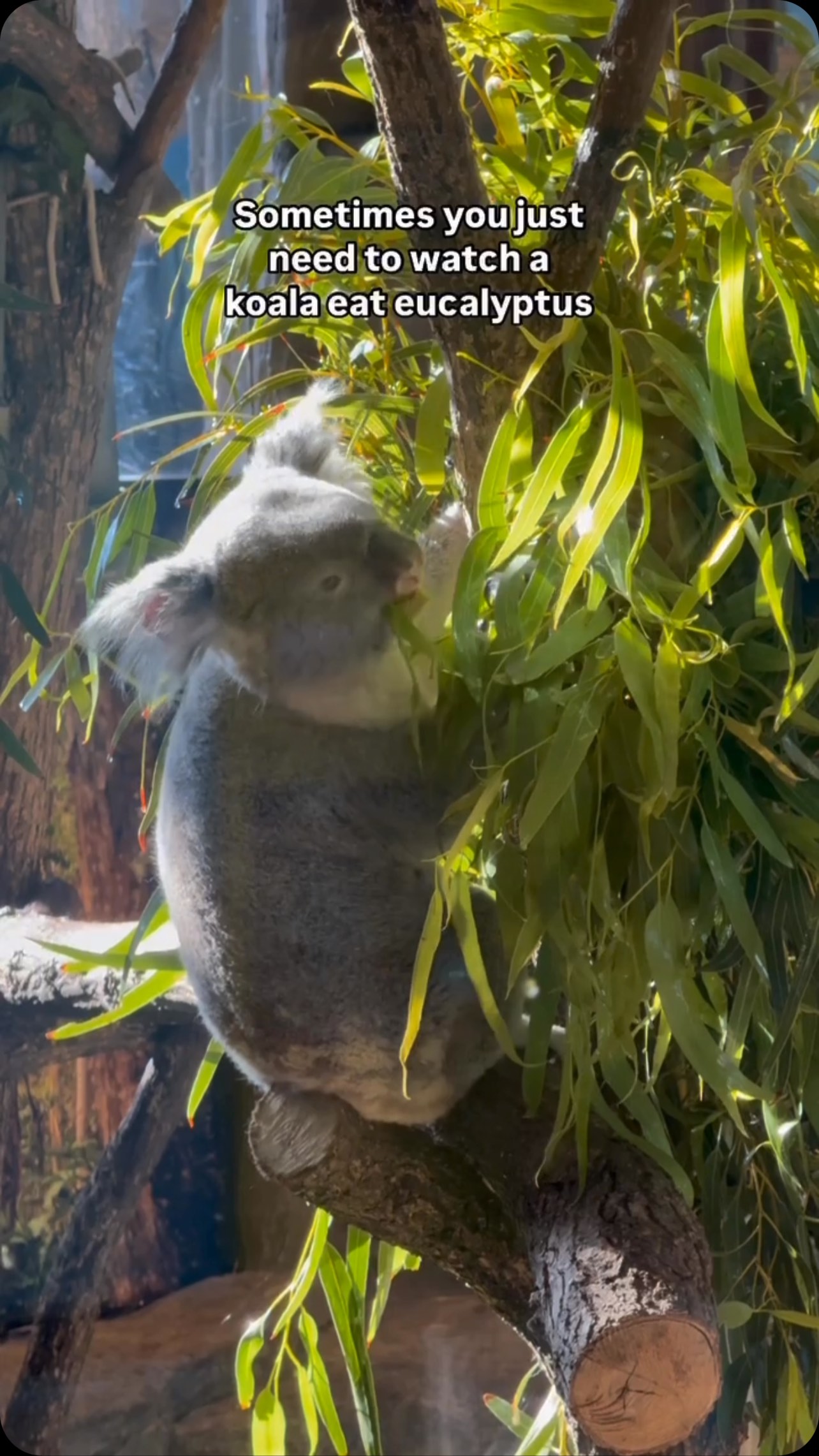- Koalas’ diet and its impact on their lifestyle and energy conservation
- The nutritional composition of eucalyptus leaves and koalas’ digestive adaptations
- Behavioral adaptations of koalas for energy-efficient living
- The role of koalas in their ecosystem and their ecological impact
- Conservation efforts to protect koalas and their habitats
Koalas are remarkable creatures with a highly specialized diet and lifestyle. They spend the majority of their day perched on trees, barely moving. Though often mistaken for being lazy, koalas follow this behavior out of necessity dictated by their diet. Their primary food, eucalyptus leaves, dictate every aspect of their lives from their consumption patterns to their physiological adaptations.
First and foremost, koalas consume eucalypt leaves almost exclusively—up to 2.5 pounds daily. This heavy intake is intriguing, given that eucalyptus leaves contain only minimal amounts of nutrients and possess compounds that are generally toxic to other animals. However, koalas have evolved to derive optimum sustenance from this seemingly unviable food source. Despite the minimal nutritional value, they eat extensively to make up for the lack of energy provided by their meals. This diet of eucalyptus leaves is low in protein and high in fiber, with chemicals that require significant energy for detoxification and digestion.
The digestive system of a koala is considerably unique in its ability to detoxify the chemical compounds found in eucalyptus leaves. The liver plays a major role in this process, breaking down the harmful aspects before they impact the health of this marsupial. Additionally, a koala’s hindgut is adapted to ferment very fibrous plant material, allowing for the optimal extraction of nutrients. This process takes time and energy, which is why koalas spend nearly 20 hours a day resting.
Koalas have developed several behavioral adaptations that correspond with their lifestyle, centered around conserving energy and reducing exertion. Their sedentary nature, for instance, allows them to lower their metabolic rates significantly, minimizing energy expenditure. High in the eucalyptus trees, koalas slowly and deliberately select leaves, preferring the younger, tender foliage that is slightly more nutritious and less fibrous. Remarkably, their olfactory sense helps them pick leaves with lower toxin levels.
Koalas impact their ecosystems in ways extending far beyond their feeding habits. Through their selective eating, they help maintain the health of eucalypt forests, encouraging new growth and contributing to the biodiversity that supports various other species who coexist within these woodlands. However, koalas are vulnerable to habitat destruction. Urbanization, deforestation, and climate change threaten their natural environments, necessitating efficient conservation measures.
Conservationists are actively working to mitigate the impact of these threats on koala populations. Wildlife corridors are being established to connect fragmented habitats, allowing koalas to traverse safely in search of food and mates. Increasing public awareness and lobbying for stronger environmental protections remain priorities as conservationists strive to safeguard koalas and their habitats. In areas where natural populations are declining sharply, dedicated breeding programs and rehabilitation centers work towards stabilizing these communities.
In summary, koalas are fascinating beings, whose seemingly leisurely lifestyle is a product of intricate evolutionary adaptations. Their dietary habits and physiological adaptations enable them to thrive on a diet that is toxic and nutritionally scarce for most animals. Preserving their native habitats, fostering healthy eucalypt populations, and integrating conservation efforts across landscapes are critical steps in ensuring their continued survival amidst escalating environmental threats. Their existence, fated by the leaves they consume, offers vital insight into the balance of nature and the interdependencies within ecosystems.
*****
Source Description
Koalas take their snack time seriously! 🐨
Koalas can eat up to 2.5 pounds of eucalyptus leaves a day, but because the leaves are low in nutrients, they spend most of their time resting to conserve energy.


